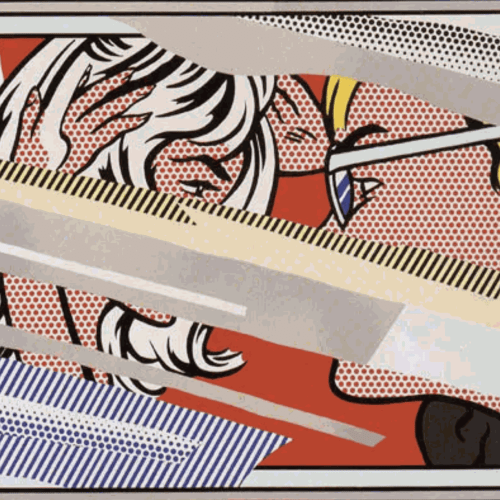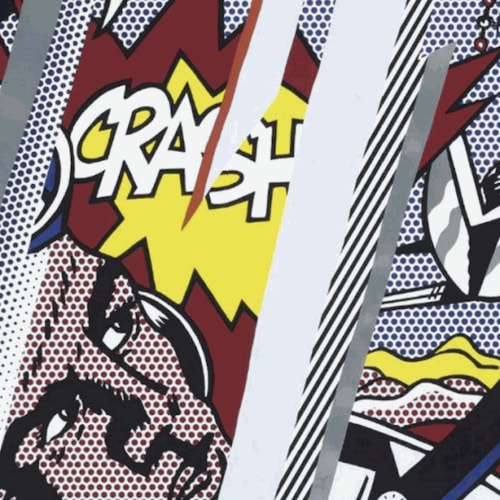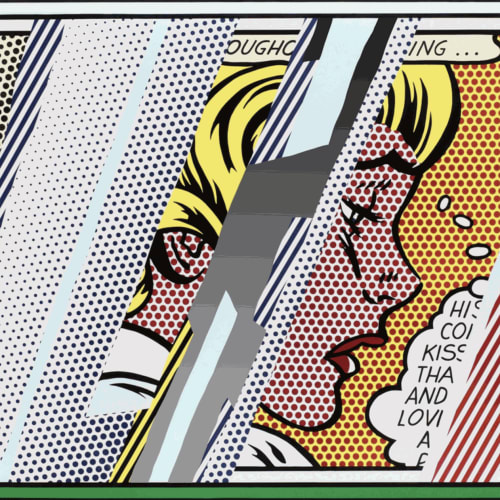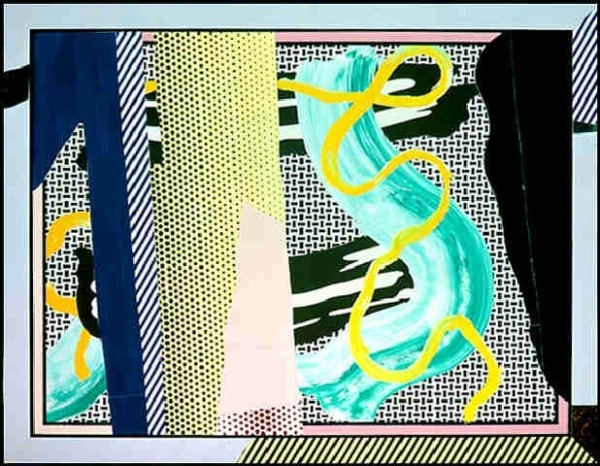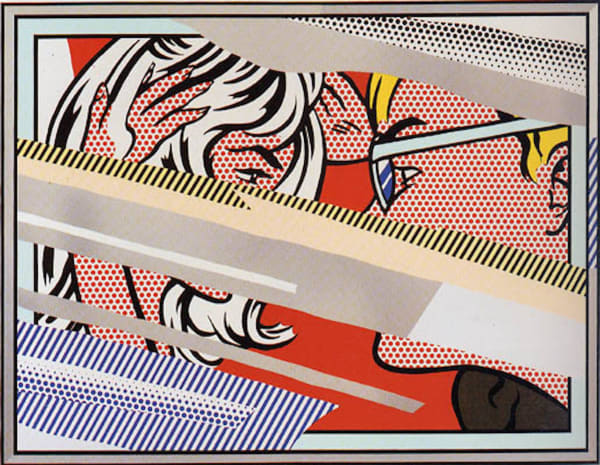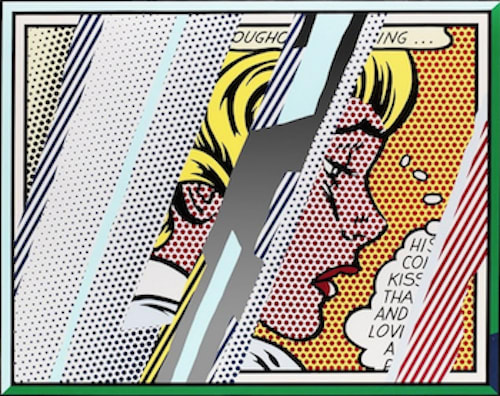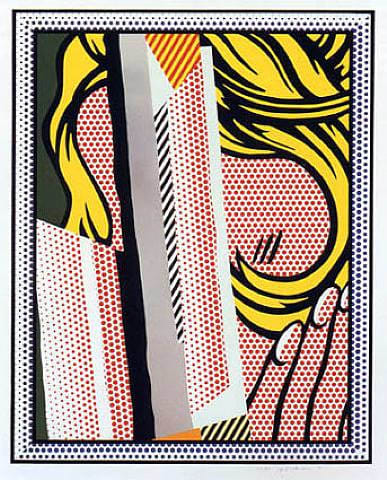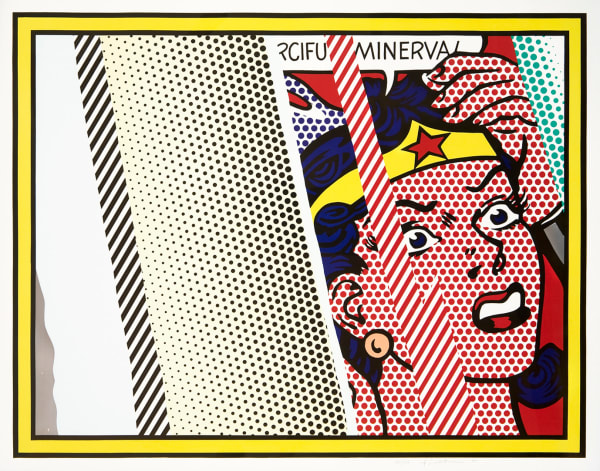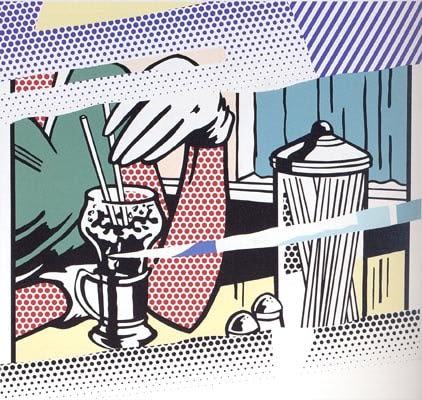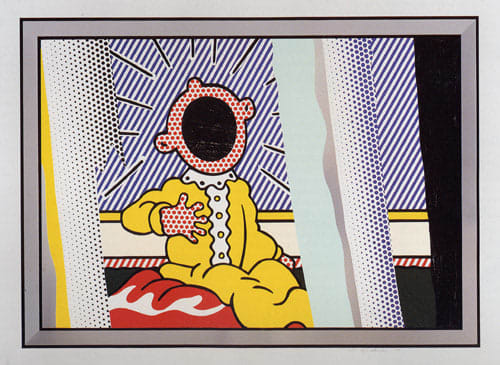Roy Lichtenstein was a prominent American pop artist known for his bold, comic book-inspired artworks. His "Reflections" series is a notable body of work that he created between 1988 and 1990. This series marked a departure from his earlier works, which were primarily inspired by comic strips and advertising imagery.
In the "Reflections" series, Lichtenstein explored the concept of visual perception and the interaction between light and reflective surfaces. He depicted everyday objects such as glass and metal surfaces with intricate patterns of dots and bold, flat colors. The series often featured distorted or fragmented reflections of these objects, creating a sense of visual complexity and optical illusion.
Lichtenstein's "Reflections" series was a departure from his previous work in terms of subject matter and technique, as it focused on the depiction of light, reflection, and visual distortion rather than the comic book imagery that he was known for. The series demonstrated his versatility as an artist and his ability to explore different themes and artistic approaches while still maintaining his distinctive style.
This series is considered a significant part of Lichtenstein's later career and is often praised for its innovative exploration of visual perception and its contribution to the broader art world's understanding of pop art.
September 21, 2023
